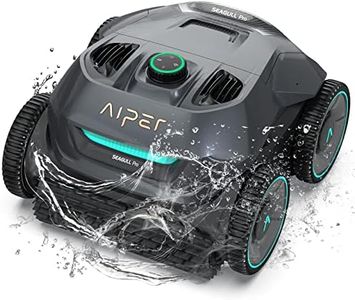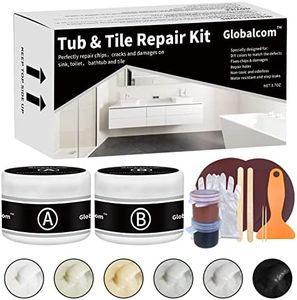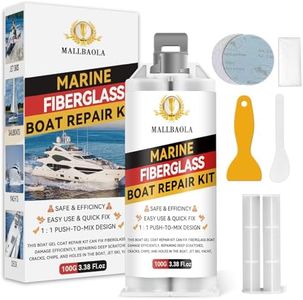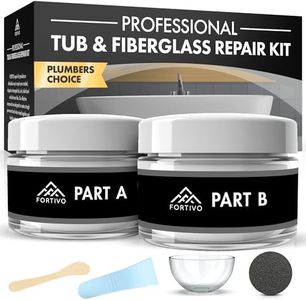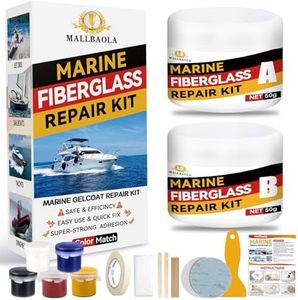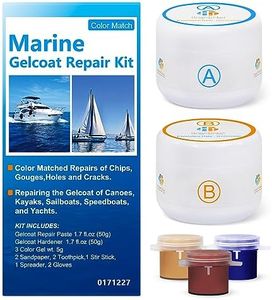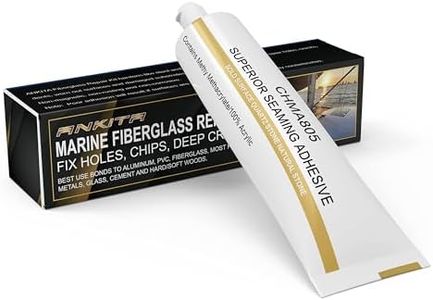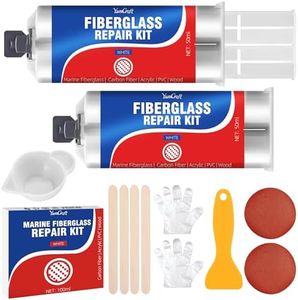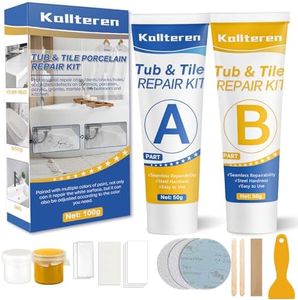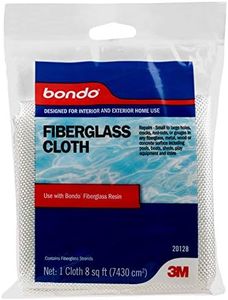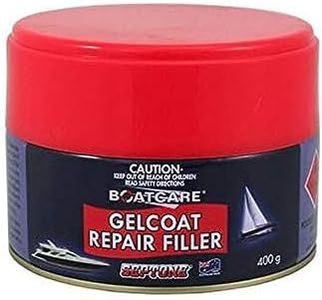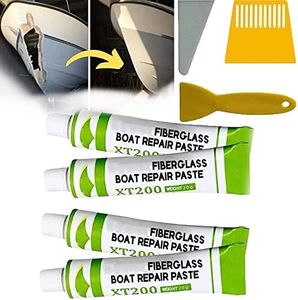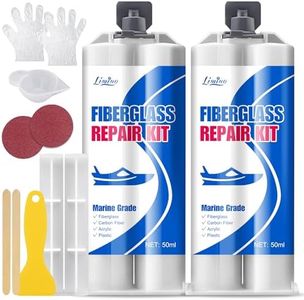We Use CookiesWe use cookies to enhance the security, performance,
functionality and for analytical and promotional activities. By continuing to browse this site you
are agreeing to our privacy policy
10 Best Fiberglass Repair Kits
From leading brands and best sellers available on the web.Buying Guide for the Best Fiberglass Repair Kits
Choosing the right fiberglass repair kit can make a big difference in the ease and durability of your repair, whether you’re fixing a boat, car body, surfboard, or household item. The best kit fits the size of your repair job, is easy to use at your skill level, and suits the type of material you’re working on. Before buying, think about where and how you’ll use the kit, as well as your confidence with hands-on repairs. Consider what surfaces you’ll be repairing and how strong the final result needs to be.Contents of the KitThe contents of a fiberglass repair kit usually include items like fiberglass cloth or mat, resin, hardener, mixing cups, application tools, and sometimes safety gloves or sandpaper. This is important because all the necessary materials should be included for a smooth repair process. Kits with just the basics work well for small, simple jobs, while more comprehensive kits are suitable for larger areas or those new to fiberglass repairs. Choose a kit with all the components you need so you don't have to make extra trips, especially if you’re a beginner.
Type of ResinFiberglass repair kits commonly come with either polyester or epoxy resin. The type of resin is crucial because it affects the strength, flexibility, and compatibility with different surfaces. Polyester resin is more traditional, cures quickly, and is cost-effective, making it good for non-structural repairs. Epoxy resin offers stronger bonding, is less likely to shrink, and sticks to a wider range of materials, making it ideal for structural repairs or surfaces that need the highest durability. Think about the surface you’ll work on and the conditions it will face to help decide which resin type is best for your project.
Amount of Material ProvidedThe size of the kit, usually listed as the amount of resin and fiberglass included, determines how large an area you can patch. Small kits have enough for simple repairs like small cracks or chips, while larger kits can handle more significant damage or multiple repairs. Estimate the size of your repair area, and choose a kit that covers it with a bit extra to avoid running short mid-project.
Ease of UseSome fiberglass repair kits are designed for beginners and include clear instructions, pre-measured packets, and straightforward tools. Others are more suited to experienced users who are comfortable measuring and mixing components. If you're new to fiberglass repairs or want to save time, look for kits that emphasize ease and user-friendliness. If you have prior experience, you may not need these extras and can opt for more basic kits.
Curing and Working TimeThe working time refers to how long you have to apply and shape the fiberglass before it starts to harden, and the curing time is how long it takes to fully set. Shorter working times are good for quick fixes, but if you need to take your time to position the material just right, a longer working time is helpful. Faster curing kits get your project finished sooner but give you less time to adjust. Consider your speed and confidence working with fiberglass before choosing.
Intended Surfaces and CompatibilityDifferent kits are optimized for use on certain materials, such as boats, cars, tubs, or surfboards. This matters because improper compatibility can lead to weak bonds or poor finish. Review the product information to make sure your chosen kit is compatible with what you’re repairing. If you plan to use it on various surfaces, look for universal or multi-purpose kits.
